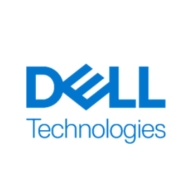![Cisco HyperFlex HX-Series [EOL] Logo](https://images.peerspot.com/image/upload/c_scale,dpr_3.0,f_auto,q_100,w_64/0dra2w8zbx5vrvwmhkdswx9l90ys.jpg)

Find out what your peers are saying about Dell Technologies, Broadcom, Nutanix and others in HCI.


| Company Size | Count |
|---|---|
| Small Business | 24 |
| Midsize Enterprise | 17 |
| Large Enterprise | 57 |
| Company Size | Count |
|---|---|
| Small Business | 7 |
| Midsize Enterprise | 3 |
| Large Enterprise | 11 |
The Cisco HyperFlex HX Data Platform is a purpose-built, high-performance, scale-out file system with a wide array of enterprise-class data management services. The data platform’s innovations redefine distributed storage technology, giving you complete hyper-convergence with enterprise storage features:
Dell EMC vSAN Ready Nodes are pre-configured building blocks that reduce deployment
risks with certified configurations, improve storage efficiency by up to 50%1
, and can help
you build or scale your vSAN cluster faster.14 Whether you're just getting started, and/or
expanding your existing VMware environment, Dell EMC is here for you every step of the
way with consulting, education, deployment and support services for the entire solution.
We monitor all HCI reviews to prevent fraudulent reviews and keep review quality high. We do not post reviews by company employees or direct competitors. We validate each review for authenticity via cross-reference with LinkedIn, and personal follow-up with the reviewer when necessary.